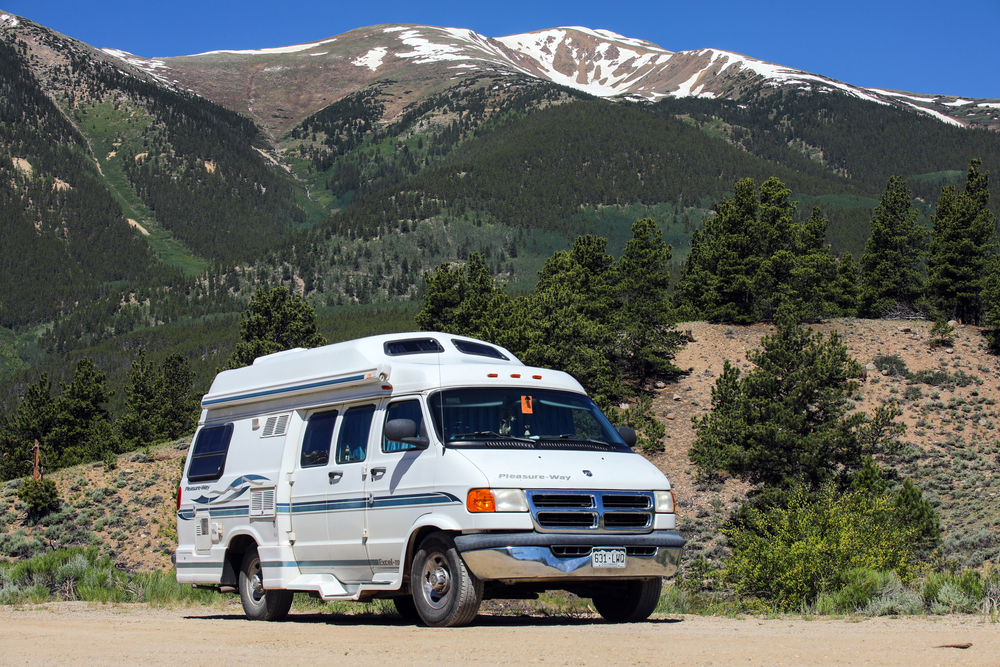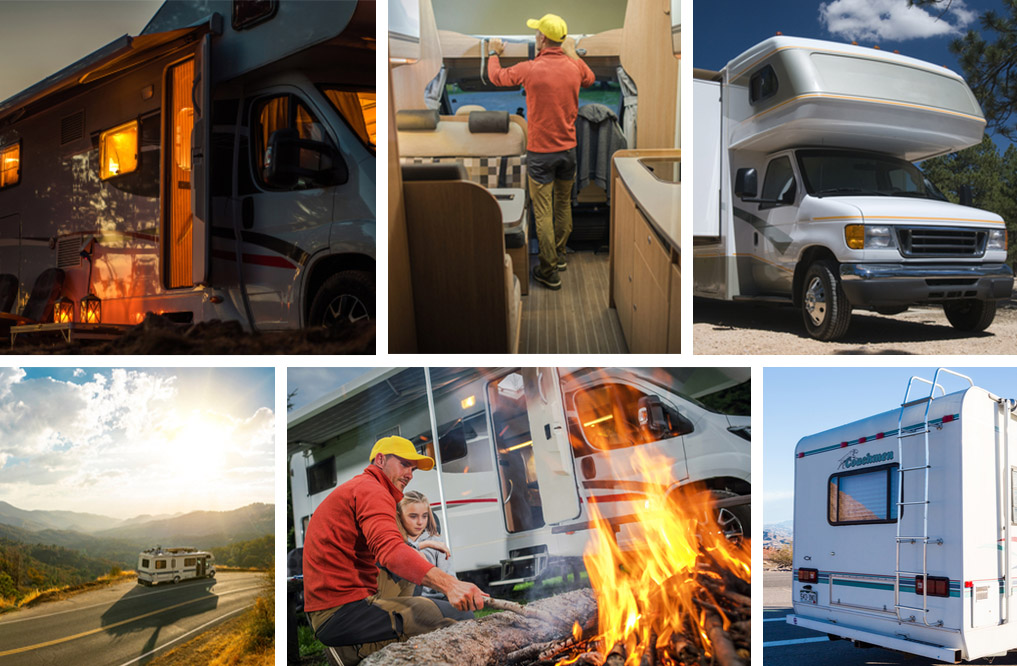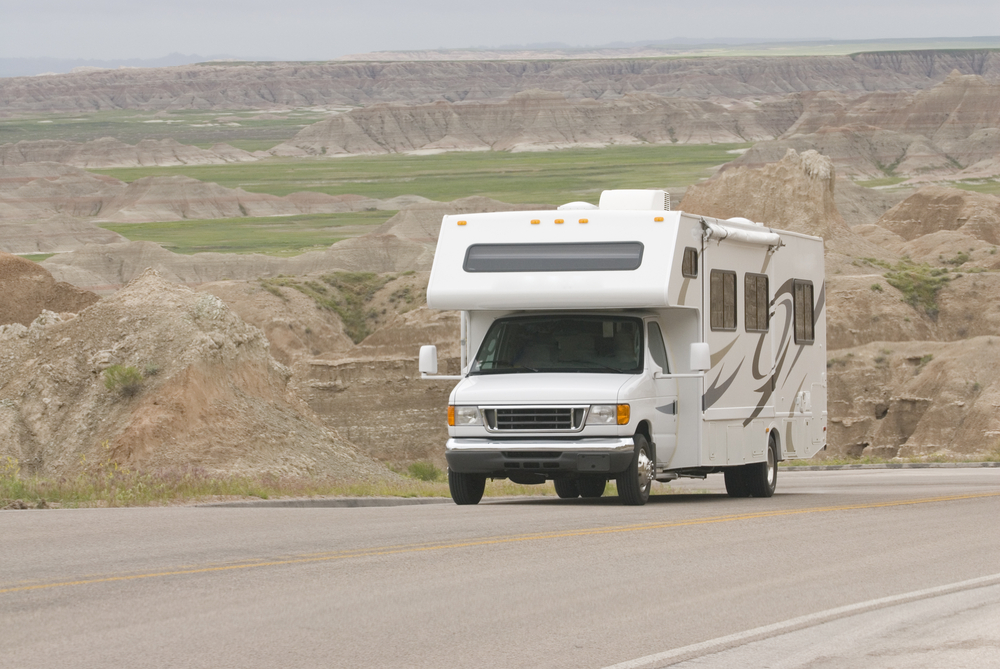The Ultimate Guide to RV Classes
May 26, 2021

What’s the only thing better than traveling the world? Why, bringing along the comforts of home, of course. RVing is an incredible way to explore the great outdoors without sacrificing the small luxuries of modern living that can make traveling so much easier.
If you’re ready to embrace the RV lifestyle, there is a lot to consider before you decide to buy an RV of your own. One of the first big decisions you’ll need to make is figuring out which RV class is right for you. In this guide, we’ll break down the key differences between RV classes so you can choose the perfect motorhome for your family.
RV Classes Explained
First, let’s start with the basics. There are two types of RVs: motorized vehicles (aka, motorhomes) and non-motorized vehicles (aka, towable rigs such as fifth wheels and travel trailers). Motorhomes can be further broken down into three main classes: Class A, B or C. Class A is the largest in size, followed by Class C and then Class B.
There is no “best RV class” because each one has its own distinct advantages and disadvantages. As you weigh the pros and cons of each RV class, you’ll want to take different factors into consideration, such as how much space you want, which specific features you’re looking for and if/where you plan to boondock.
Now, let’s take a closer look at each of the three different RV classes and why each one may or may not be right for you.
Class A Motorhome: The Big Kahuna
The largest and most luxurious of the three RV classes, the Class A motorhome is the quintessential modern RV. This RV class is generally defined by its large, flat and slightly slanted windshield which gives it a bus-like appearance. Class A RVs are usually equipped with six wheels and come in a variety of sizes, ranging from about 25 feet to 45 feet.
Class A motorhomes come with two engine options: a gas engine—which is typically located at the front of the RV—or a diesel engine, which is usually located in the rear of the RV. If you hear someone call their RV a “pusher,” they’re referring to a Class A diesel RV.

Advantages of Class A Motorhomes
- You’ll have maximum space. One of the major advantages of owning a Class A RV is its massive interior. Class A’s are basically a giant home on wheels! With so much space, passengers will have plenty of room to walk around and take advantage of the motorhome’s amenities, some of which can be pretty lavish.
- Excellent car towing capabilities. In general, Class A motorhomes tend to have the highest tow ratings of any motorhome, with some able to tow vehicles of up to 10,000 pounds. A Class A can tow cars, trucks, boats and maybe even a small camper.
- More capacity for resources. Class A motorhomes have more capacity for black water, gray water and batteries. This can be a benefit if you’re dry camping at a campsite without hookups and need to conserve your resources.
- Plenty of storage. Because of their massive size, Class A’s also offer more storage space, including ample basement storage. (If you’re new to RVing, basement storage simply refers to the extra storage compartment that is located underneath the living area of the RV.) Many seasoned RVers utilize this space by storing hard cases containing their sensitive equipment.
Disadvantages of Class A Motorhomes
- They’re expensive. Unfortunately, all that luxury and space typically comes with a hefty price tag. Depending on the RV’s amenities and other factors, the cost of a Class A motorhome can range anywhere from $70,000 to $250,000. Some luxury Class A’s cost about $1 million to $2 million. Class A motorhomes also tend to have low fuel efficiency, especially Class A diesel pushers.
- Can be intimidating to drive. Getting behind the wheel of a Class A motorhome can be scary and stressful for beginners, which is why it’s critical to practice driving a Class A before you go on any big camping trips. Since you’re working with more length, width and girth, you’ll need to adjust many of your driving habits.
- Potentially limits where you can camp. Be aware that some state and national parks haven’t upgraded their campgrounds in a long time and may not be able to accommodate a Class A motorhome over 40 feet. Many RVers get around this by parking their RV in the little towns outside of the state and national parks and then simply using their towed vehicle to access areas inside the park. State and national parks may also have limited spots for Class A RVs, requiring you to book long in advance.
Class B Motorhome: Little But Powerful
Class B motorhomes (aka, camper vans) are the smallest type of motorhome. Some start out as vans and are converted into Class B’s by installing new hardware, raising the roof height and increasing the chassis length.
Class B motorhomes can range from about 17 feet to 23 feet and may come in a variety of designs and layouts. But no matter how large or small, camper vans always look like…well, a van.
For a new Class B motorhome, you’re looking at a price range of about $40,000 to $125,000. This may come as a surprise when you compare this price range to that of a larger Class C motorhome (see below). The higher price tag is due to how camper vans are made. They’re made on an expensive chassis and are generally more difficult to make.

Advantages of Class B Motorhomes
- Easiest to drive and park. Class B motorhomes are by far the easiest RV class to drive due to their smaller stature. Class B’s are also much easier to park compared to Class A’s and Class C’s, making it ideal for solo campers who may not have a partner to help them park their vehicle.
- Can fit into a garage. Figuring out where to park a huge RV can be a major pain. With camper vans, this is less of a concern because many are small enough to fit inside a garage. If they can’t fit into your garage, they can usually be parked in the driveway or on a sidewalk without much trouble.
- Great fuel economy. Class B motorhomes tend to have the best fuel economy of all the RV classes. But like any other vehicle, the gas mileage of a camper van can vary depending on factors such as weight, engine size, driving habits and what you’re potentially towing behind it. Keeping your Class B in top shape with regular service and driving slowly can help improve gas mileage while keeping you and your passengers safe.
- Ideal for weekend warriors. Class B motorhomes are particularly appealing for people who are employed full-time and can only get away for the occasional weekend camping escape. Their small size also makes it easier to maneuver around twisting mountainsides and narrow paths, allowing you to camp just about anywhere.

Disadvantages of Class B Motorhomes
- Tight quarters. Since camper vans are limited on space, they may not be suitable for families or campers who prefer to have more space. If the camper van doesn’t have an elevated roof, they’re also not a great option for tall folks who may feel cramped inside their van.
- Lack of amenities. Some, but not all, Class B’s come with small amenities such as a bed, tiny kitchen, seating area and a toilet. Depending on what you want to use your RV for and who will be using it with you, this may not be enough amenities for a comfortable camping experience.
- Minimal storage. Dedicated RVers are constantly looking for ways to increase their storage capacity, regardless of RV size. With a Class B motorhome, you’ll have the least amount of storage of any RV class. If you have a lot of outdoor equipment you wish to bring along with you, this may be a dealbreaker.
Class C Motorhome: The Goldilocks of RVs
If you want the comfortable camping experience of a Class A without the hassle or the expense, a Class C motorhome is a fantastic mid-sized option. Class C’s are popular in the RV world because they’re easier to maneuver than Class A’s. They’re also more affordable with a price range of about $50,000 to $120,000 for a new Class C motorhome.
Class C’s are built on either a truck or a van chassis. The length of a Class C motorhome can vary greatly, with some being as small as 20 feet and others extending beyond 40 feet.
One of the easiest ways to distinguish a Class C motorhome is by its additional section that extends over the vehicle's cab. This overhang usually serves as an extra sleeping bunk.
However, not all Class C’s have this overhang. Within the Class C family, there is an RV called the “Super C,” which may not have the cab-over bunk area. The Super C RV is similar in design to a Class C motorhome, except that it has a considerably larger chassis, higher towing capacity, stronger engine and a more spacious floor plan.

Advantages of Class C Motorhomes
- Moderately-sized amenities. Compared to a Class B motorhome, Class C’s have a lot more amenities and space. One of their biggest selling points is the overhanging bunk, which is ideal if you’re camping with family and need extra sleeping space for the kids.
- Mid-range price point. Although not as spacious or luxurious as a Class A, Class C’s are generally more budget-friendly. You’ll probably save at least $15K by opting for a Class C over a Class A. It’s also worth pointing out that Class C’s often get better fuel economy to boot, so you may save money there as well.
- Easier to drive. Depending on the size you get, Class C’s are often easier to drive compared to Class A’s. They typically have a tighter turn radius, less wind drag and are lower to the ground so you can see better from the driver’s seat.
- Easier to find campsites. According to CamperReport, RVs up to 32 inches—about the average length of a Class C—can fit into 84 percent of all national park campgrounds. Compare this number to RVs that are 40 inches in length, which can only fit into 53 percent of national park campgrounds.
- Significantly safer. In regard to RV safety, Class C motorhomes have several advantages over Class A’s. They’re lower to the ground and are therefore less likely to roll in case of an accident. Class C’s are also equipped with more airbags and are crash-tested by the National Highway Traffic Safety Administration.

Disadvantages of Class C Motorhomes
- May be difficult to drive. Although Class C’s are usually easier to drive than Class A’s, they can still be difficult to get the hang of, especially if you’re used to driving a small car. Like Class A’s, be sure to do a few trial runs with smaller trips before you take your Class C on a big trip.
- Limited exterior storage. While Class C’s often have ample interior storage and good floor plans, they tend to be lacking in exterior storage as a result. You may have difficulty storing your sports or outdoor equipment.
- Front seats don’t turn. The driver and passenger seats don’t swivel in a Class C motorhome. This means that once you’re done driving, the front of your RV essentially becomes wasted space.
Embracing the Open Road
There is an endless array of RV options out there for enthusiastic campers, with benefits and downsides to each. Campers who prefer to live a minimalist lifestyle may prefer a Class B motorhome, while retirees with plenty of time on their hands may find Class A’s more to their liking. But no matter which RV you choose, the RV community is sure to welcome you with open arms. See you on the open road!

SIGN UP FOR EXCLUSIVE OFFERS
Sign up for our newsletter and get exclusive access to new product launches, special offers and much more.
RELATED BLOGS















